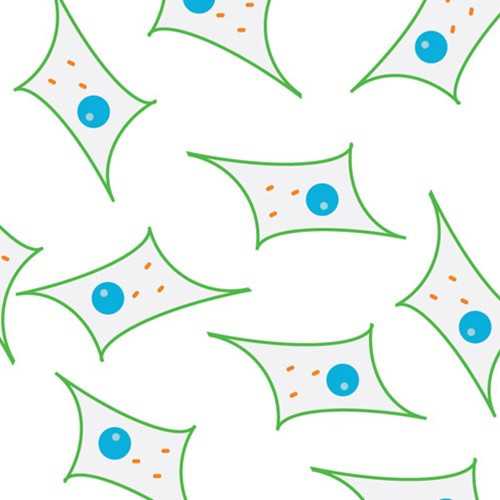Choroidal Epithelial Cell Line (Z310)
Z310 cell is an immortalized murine epithelial cell line derived from the primary choroidal epithelial cells from rat choroid plexus tissue.
Highlights:
- Easy to grow
- With a stable choroidal epithelial phenotype and genotype
- Expresses transthyretin, a unique marker produced by the choroidal epithelia in the CNS
- Ideal for in vitro study of CSF proteins, macromolecules, nutrients, and trace elements
- Useful for blood-CSF barrier research
The choroid plexus is implicated in many functions in the brain, with one of these being regulating the production and composition of cerebrospinal fluid (CSF). This fluid is what provides the brain with protective buoyancy. The choroid plexus produces and secrets important molecules, such as transferrin, which is important for iron homeostasis in the brain. Choroid plexus cells also have a role in normal brain homeostasis as well as neuroinflammatory processes, by secreting cytokines that recruit monocyte-derived macrophages (among others) to the brain.
CSF is separated from the blood, at the capillary level, and from brain tissue by the fluid-brain barrier called the blood-cerebrospinal fluid barrier (BCSFB). The blood-CSF barrier selectively permits the passage of specific substances (such as nutrients) into the brain and facilitates the removal of brain metabolites and metabolic products into the blood. It prevents the passage, however, of most blood-borne substances into the brain.
Z310 cell is an immortalized murine epithelial cell line derived from the primary choroidal epithelial cells from rat choroid plexus tissue.
Highlights:
- Easy to grow
- With a stable choroidal epithelial phenotype and genotype
- Expresses transthyretin, a unique marker produced by the choroidal epithelia in the CNS
- Ideal for in vitro study of CSF proteins, macromolecules, nutrients, and trace elements
- Useful for blood-CSF barrier research
The choroid plexus is implicated in many functions in the brain, with one of these being regulating the production and composition of cerebrospinal fluid (CSF). This fluid is what provides the brain with protective buoyancy. The choroid plexus produces and secrets important molecules, such as transferrin, which is important for iron homeostasis in the brain. Choroid plexus cells also have a role in normal brain homeostasis as well as neuroinflammatory processes, by secreting cytokines that recruit monocyte-derived macrophages (among others) to the brain.
CSF is separated from the blood, at the capillary level, and from brain tissue by the fluid-brain barrier called the blood-cerebrospinal fluid barrier (BCSFB). The blood-CSF barrier selectively permits the passage of specific substances (such as nutrients) into the brain and facilitates the removal of brain metabolites and metabolic products into the blood. It prevents the passage, however, of most blood-borne substances into the brain.
| Product Type: | Cell Line |
| Name: | Choroidal Epithelial Cell Line (Z310) |
| Cell Type: | Choroid plexus choroidal epithelial cells |
| Morphology: | Polygonal epithelial cell type |
| Organism: | Rat |
| Source: | Brain choroid plexus |
| Biosafety Level: | 1 |
| Growth Conditions: | DMEM containing 10% FBS, 10,000 U penicillin/mL, 10,000 streptomycin/mL, 50 mg Gentamicin, and 10ng/mL EGF |
| Subculturing: | Passage cells every 2-3 days, when the culture reaches about 80% confluence. |
| Cryopreservation: | 90-95% Culture medium supplemented with 5-10% dimethyl sulfoxide (DMSO) |
| Comments: |
Population doubling time: 20-22 hours. Typical cell-type marker: Transthyretin (TTR). |
| Storage: | LN2 |
| Shipped: | Dry Ice |
- Monnot AD, Zheng W. Culture of choroid plexus epithelial cells and in vitro model of blood-CSF barrier. Methods Mol Biol. 2013;945:13-29. doi:10.1007/978-1-62703-125-7_2
- Zheng W, Zhao Q. Establishment and characterization of an immortalized Z310 choroidal epithelial cell line from murine choroid plexus. Brain Res. 2002;958(2):371-380. doi:10.1016/s0006-8993(02)03683-1
If you publish research with this product, please let us know so we can cite your paper.


